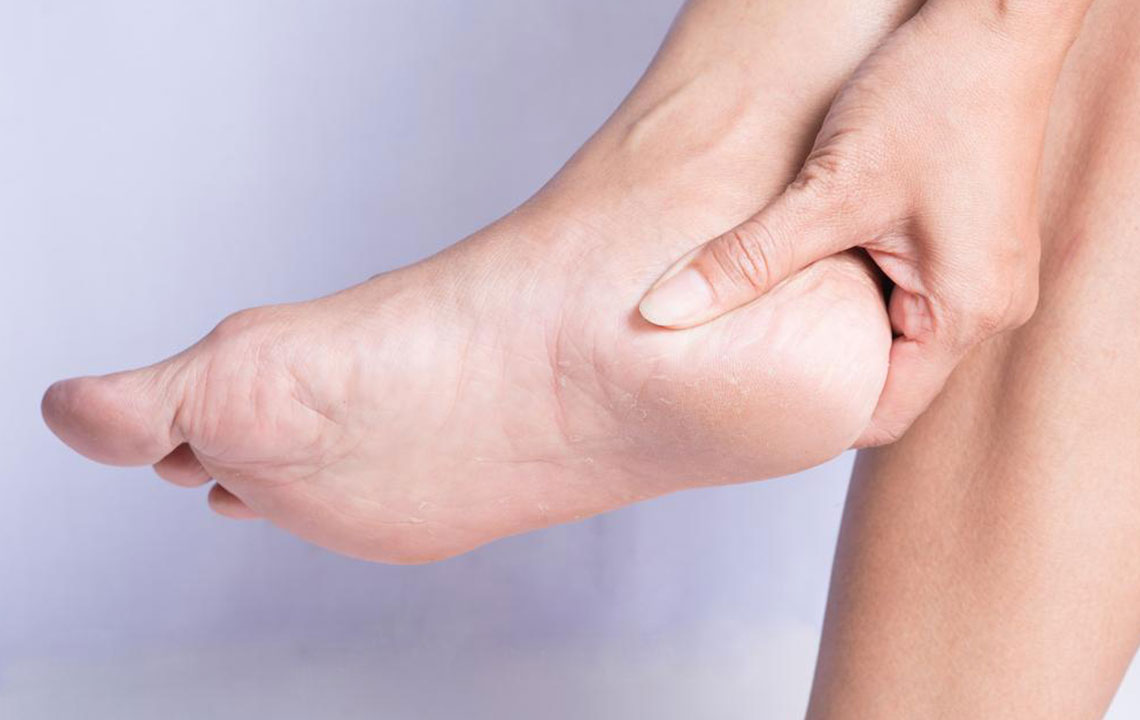Treatment for Heel Pain: Relief from Severe Heel Pain
The most common foot problem is heel pain.It is felt either under the heel (plantar fasciitis) or just behind it (Achilles Tendinitis). Heel pains fluctuate from intense to moderate and often subside over time. A human foot consists of 26 bones, out of which the heel bone (Calcaneus) is the largest.
The heel supports the body weight while walking or running. It absorbs the shocks received by the body, taking all the pressure.

Causes of Heel Pain
Let us discuss the various causes of heel pains. Treatment for heel pain is what you need to opt for, if you face any such situations.
Plantar Fasciitis
Plantar Fasciitis is the inflammation of the Plantar Fascia. The plantar fascia is a long ligament that stretches from the calcaneus to the tip of the foot. If you stretch this ligament beyond its capacity, you will experience. Often the pain is felt in the middle of the foot rather than the heel. You will experience pain especially after rest and if the Achilles Tendons are strained. An ice compress will provide relief.
Heel Bursitis
Bursae are nothing but sacs of fluids that are found around your joints. Bursae surround the area where tissues, tendons, and muscles are supposed to meet the bones. They are a lubricant that allows free movement of the joints. A strain on the bursae of the heel can cause heel pain. It happens when sudden pressure is inflicted on the heel due to shock. Wearing wrong footwears can also damage the bursae. You will feel the pain at the back or deep inside the heel, and this can increase. Change your footwear to get relief.
Achilles Tendonitis
You exert pressure on your Achilles’ tendons while walking, running, or jumping. Continuous pressure on the tendons can rupture them and cause inflammation and pain. There are two types of Achilles tendonitis; they are Insertional and Noninsertional. Insertional Tendonitis affects the lower portion of the tendon. Non-insertional tendonitis affects the middle portion of the tendon. Take rest and do exercise as a treatment for this heel pain.
Other factors
The other causes of heel pain are:
• Tarsal Tunnel Syndrome
• Stress Fracture
• Calcaneal Apophysitis
• Osteomyelitis
• Rheumatoid Arthritis
Symptoms of Heel Pain
You need to be vigilant about the following symptoms to get the right treatment for heel pain.
Bunion
A bunion is a bony bump on the big toe of the foot. Malalignment of joints neglected over a period of time can cause bunions. A bunion is painful and can lead to the malfunction of other joints in the foot, especially heel. Wearing improper shoes can lead to bunion formation. This is a common symptom of heel pain.
Corns and Calluses
Repeated friction and pressure on the heel can cause corns and calluses. Corns and calluses are formed due to ill-fitted footwear, hammertoes, and bunions. They are found on the rear side or heel of the foot.
Gout
Gout is formed because of high uric acid content in the body. It is characterized by redness, swelling, and pain. The uric acid crystallizes and settles in the joints, heels being no exception.
Post Static Dyskinesia
Post static dyskinesia is a pain after rest. Heel pain triggers more after a prolonged period of rest. This is true, especially in the morning. With the passage of the day, it may ease but needs treatment.
Treatment of Heel Pain
Rest
The primary and easy treatment for heel pain comes handy. In this busy bad world, it is important you give your feet it’s due rest. It is mandatory if you pursue a profession that involves high-intensity physical exhaustion. Stretch your legs upwards for 20 minutes twice a day. Relax and watch television or read your favorite book.
Ice
Application of ice packs is a useful treatment for heel pain. Ice can immediately reduce inflammation and numbness. It is like a first aid and buys you time for further treatment of heel pain. However, it is a temporary treatment, and underlying cure should be administered.
Stretch
If you suffered a heel pain due to plantar fasciitis, then stretching is the best option for you. This treatment of heel pain includes stretching the foot in the right posture to ease out the inflammation. The biomechanics of your feet is hampered due to the excessive stretch of the ligament. This often leads to inflammation and tear of the ligament causing heel pain. Proper stretching exercise will provide as a treatment for heel pain.
Shop For Shoe
To keep your feet from damage, you will need a good pair of shoes. Wearing improper shoes, like high-heels and insole ones will cause damage to your feet. Wearing ill-fitting shoes causes bunions, corns, and even plantar fasciitis. A good shoe will give proper elevation to your feet and exert less pressure on the heels. Wearing the right shoe is an important factor while you get a treatment for heel pain.


